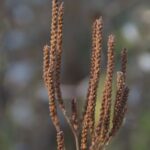swamp vervain
Verbena hastata

Description:
Also called blue vervain, this slender, erect, herbaceous perennial plant that is up to 60″ tall. It is found in wetlands and stream corridors across Wisconsin. Swamp vervain is an early colonizer following disturbance. Its small blue flowers appear along a florescence stalk in July and continue blooming into early September. The flowers are replaced by small nutlets (4 nutlets per flower).
Details:
swamp vervain
[wi_plants_standard_vw filter="attr::emd_usda_symbol::is:: VEHA2;"]
[wip_eco_standard_vw filter="attr::emd_usda_symbol::is:: VEHA2;"]
[wip_morph_standard_vw filter="attr::emd_usda_symbol::is:: VEHA2;"]
[wip_require_standard_vw filter="attr::emd_usda_symbol::is:: VEHA2;"]
[wip_repro_standard_vw filter="attr::emd_usda_symbol::is:: VEHA2;"]
[wip_use_standard_vw filter="attr::emd_usda_symbol::is:: VEHA2;"]
References:
- Illinois Wildflower Database – Verbena hastata
- USDA Plants Database – Verbena hastata
- Wisflora Database – Verbena hastata
Return to Native Plants page
